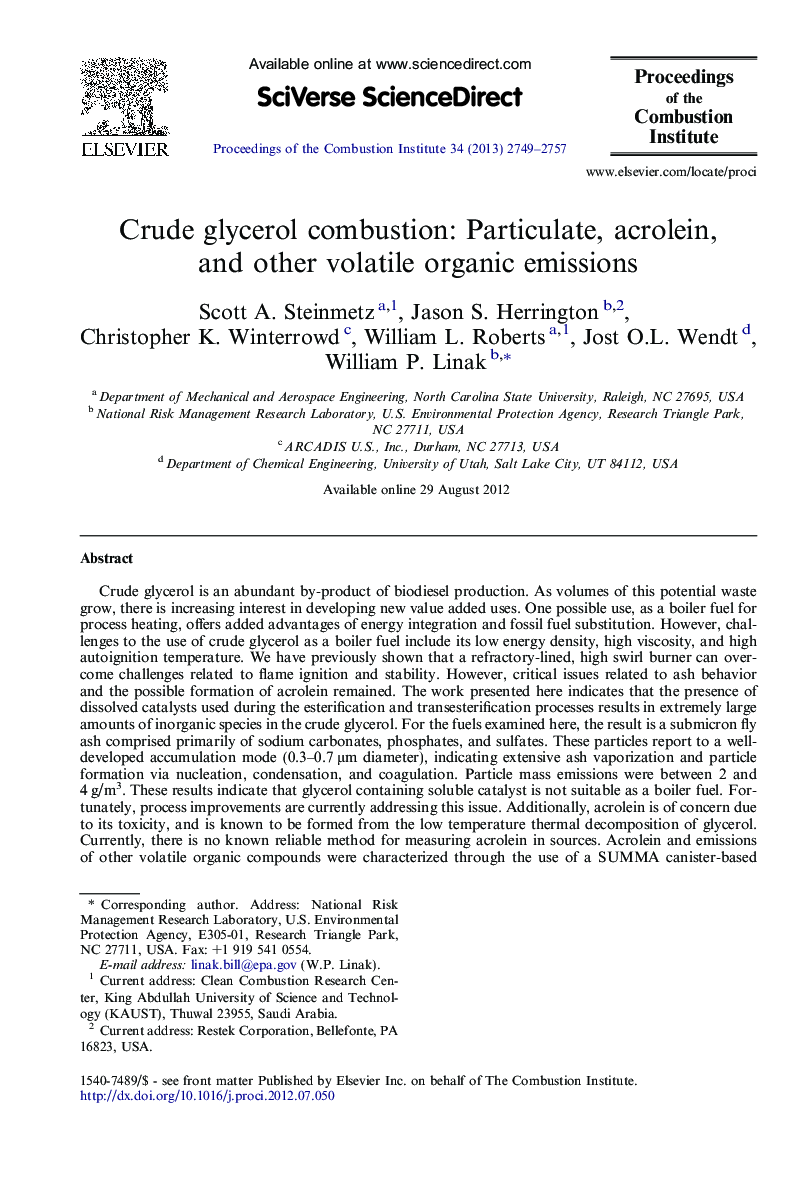| کد مقاله | کد نشریه | سال انتشار | مقاله انگلیسی | نسخه تمام متن |
|---|---|---|---|---|
| 240908 | 1427922 | 2013 | 9 صفحه PDF | دانلود رایگان |

Crude glycerol is an abundant by-product of biodiesel production. As volumes of this potential waste grow, there is increasing interest in developing new value added uses. One possible use, as a boiler fuel for process heating, offers added advantages of energy integration and fossil fuel substitution. However, challenges to the use of crude glycerol as a boiler fuel include its low energy density, high viscosity, and high autoignition temperature. We have previously shown that a refractory-lined, high swirl burner can overcome challenges related to flame ignition and stability. However, critical issues related to ash behavior and the possible formation of acrolein remained. The work presented here indicates that the presence of dissolved catalysts used during the esterification and transesterification processes results in extremely large amounts of inorganic species in the crude glycerol. For the fuels examined here, the result is a submicron fly ash comprised primarily of sodium carbonates, phosphates, and sulfates. These particles report to a well-developed accumulation mode (0.3–0.7 μm diameter), indicating extensive ash vaporization and particle formation via nucleation, condensation, and coagulation. Particle mass emissions were between 2 and 4 g/m3. These results indicate that glycerol containing soluble catalyst is not suitable as a boiler fuel. Fortunately, process improvements are currently addressing this issue. Additionally, acrolein is of concern due to its toxicity, and is known to be formed from the low temperature thermal decomposition of glycerol. Currently, there is no known reliable method for measuring acrolein in sources. Acrolein and emissions of other volatile organic compounds were characterized through the use of a SUMMA canister-based sampling method followed by GC–MS analysis designed for ambient measurements. Results indicate crude glycerol combustion produces relatively small amounts of acrolein (∼15 ppbv) and other volatile organic compounds, with emissions comparable to those from natural gas combustion.
Journal: Proceedings of the Combustion Institute - Volume 34, Issue 2, 2013, Pages 2749–2757